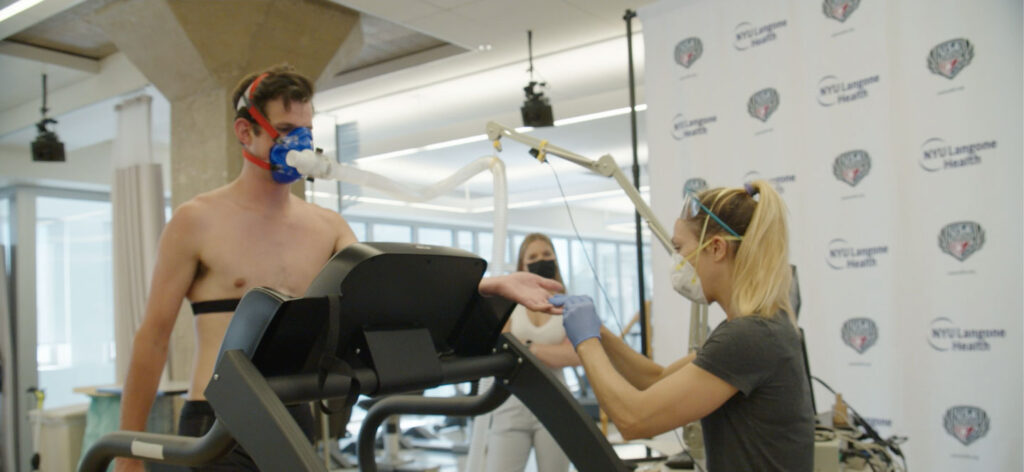We have partnered with the Sports Health experts at NYU Langone to bring you the “Fit for Flight” Series. As an official medical services provider and performance center for USA Nordic Sport, their renowned experts will answer questions from our Olympic hopefuls and give you tips on a variety of sports health topics.
If you need help getting “Fit for Flight,” NYU Langone offers expert medical care and state-of-the-art diagnostic testing for athletes. USA Nordic members/readers receive exclusive concierge access to their multidisciplinary team—whether you want to improve your performance, have a nagging orthopedic injury, or just need an annual checkup. Fill out our appointment request form and one of their experts will be in touch to help coordinate your care.
For our next installment, we hear from clinical exercise physiologist, Heather Milton, on the effects of temperature on overall sport performance.


“During high heat environments, our bodies cool themselves by dilating blood vessels close to the skin’s surface. This re-distributes blood flow to the skin, and slightly less to the working muscles. This means, our heart rate increases to ensure adequate blood flow still reaches the working muscles. This is why your heart rate will be higher in hot environments versus more temperate environments, for the same activity. We also start to lose blood volume if the activity is continued over a long period of time, as sweat decreases total body water and subsequently, blood volume due to the greater heart rate response. The result is a decrease in the ability to perform at high intensities. This can be avoided by heat acclimatization: gradually introducing higher heat environments in small doses over a period of 7-14 days, and replacing water loss to avoid dehydration. Temperatures higher than 33°C increase the risk of dehydration, heat stroke and other heat related illnesses if not acclimated.
During cool environments, one can imagine the reverse occurs. Less blood flow is circulating to the limbs and skin, and more is redirected to the visceral organs and thorax to maintain core body temperature. However, in cold environments, to maintain warmth, metabolism increases to maintain body temperature as well. This may be due to a combination of shivering, or increased muscle contraction as a response to cold temperatures, as well as increased recruitment of fast twitch muscle fibers, and breathing rate. The respiratory system has to work harder to warm the cooled air prior to it reaching the lungs. Exercise induced asthma is much more common in the cold. Restriction of airways limits performance, as it is harder to distribute oxygen to working muscles for exercise.
Cool muscles perform with less power than warm muscles, and thus, our bodies recruit more fast-twitch muscle fibers to generate force. This can lead to higher lactate levels and quicker onset of fatigue. Temperatures lower than 11°C can be detrimental to those with low body fat, and power athletes performing at higher intensities.”